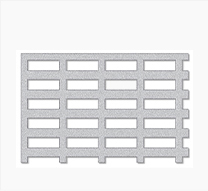loading...
- No. 9, Xingyuan South Street, Dongwaihuan Road, Zaoqiang County, Hengshui, Hebei, China
- admin@zjcomposites.com
- +86 15097380338
- Welcome to visit our website!
frp structural members
FRP Structural Members Advancements and Applications
Fiber Reinforced Polymer (FRP) structural members have emerged as a transformative solution in the field of civil engineering and construction. Comprising a polymer matrix reinforced with fibers, usually glass, carbon, or aramid, FRP materials boast an impressive combination of high strength, lightweight characteristics, and resistance to corrosion. These attributes make them increasingly attractive for a range of applications, from bridges to buildings, and even in the aerospace industry.
FRP Structural Members Advancements and Applications
Corrosion resistance is another crucial feature that sets FRP apart from traditional materials. Steel, while strong, is prone to rust and deterioration when exposed to moisture, chemicals, and harsh environmental conditions. FRP members do not suffer from such issues, significantly extending the service life of structures, particularly in marine and industrial environments. This durability can result in lower maintenance costs over time, making FRP an economically appealing option.
frp structural members

In recent years, the versatility of FRP materials has led to innovative applications across various sectors. In the construction industry, FRP is increasingly used in reinforcing existing structures, providing additional support without substantial alteration to the original design. Moreover, new trends in prefabrication have seen FRP components manufactured off-site, facilitating rapid assembly on site and minimizing construction delays.
Furthermore, the sustainability aspect of FRP is gaining traction. As the world shifts toward greener construction practices, the potential for FRP materials to be made from recycled fibers or bio-based resins offers a more eco-friendly alternative to conventional building materials. This capability not only reduces environmental impact but also aligns with global moves toward sustainable development.
Despite the numerous advantages, the adoption of FRP structural members does not come without challenges. High initial costs related to material manufacturing and bonding techniques can deter some projects. Additionally, there is a need for more extensive research and standardized design codes for FRP applications to ensure safety and performance in a variety of conditions.
In conclusion, FRP structural members represent a significant advancement in construction materials, providing unique benefits such as lightweight properties, corrosion resistance, and sustainability. As the industry continues to evolve and address current challenges, the future of FRP in building and infrastructure projects looks promising, paving the way for innovative and resilient structures that can meet the demands of modern engineering.
-
GRP Structures: The Future of Lightweight, High-Performance EngineeringNewsJun.20,2025
-
FRP Water Tank: High-Performance Storage for Corrosive and Clean Water SystemsNewsJun.20,2025
-
FRP Square Tube: The New Industry Standard for Chemical and Structural ApplicationsNewsJun.20,2025
-
FRP Pultruded Profiles: The Ultimate Choice for Lightweight Structural StrengthNewsJun.20,2025
-
FRP Handrails: The Safer, Smarter, and Stronger Choice for Modern InfrastructureNewsJun.20,2025
-
FRP Grating: The Smart Solution for Durable, Lightweight Industrial FlooringNewsJun.20,2025
-
Why Choose a Galvanized Water Tank for Your Storage NeedsNewsMay.21,2025
